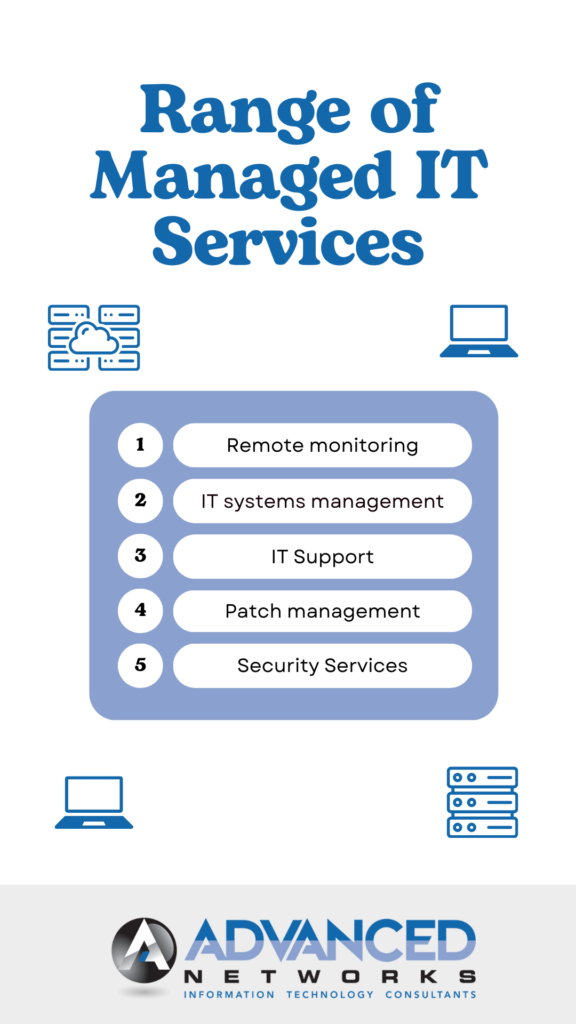Managed IT Services 2.0: What the Future Holds
In the current rapidly evolving technological landscape, businesses are progressively looking towards managed IT services as a strategic solution to keep pace with change. As companies strive for greater efficiency and competitiveness, the need for expert support and innovative solutions is paramount. This shift is not just about outsourcing IT; it's about a partnership that drives growth, enhances security, and leverages the latest advancements in technology.
In the future, the future of managed IT services promises to be even more transformative. As artificial intelligence, cloud computing, and cybersecurity continue to evolve, these services will adapt to meet the demands of businesses in a digitized world. Organizations will benefit from improved agility, better resource management, and a proactive approach to IT challenges, allowing them to focus on their core missions while relying on knowledgeable partners to manage their technology environments.
Trends Shaping Managed IT Solutions
The growth of cloud services is notably reshaping managed IT solutions. Companies are more frequently moving their operations to the cloud for adaptability and expansion. This transition allows IT service providers to offer integrated solutions that seamlessly combine on-premises and cloud services. As businesses utilize multi-platform strategies, they seek the knowledge of managed IT services to manage and enhance their cloud operations effectively.
Automation and artificial intelligence are also assuming pivotal roles in the advancement of IT service management. By utilizing automated solutions, service providers can streamline processes, enhance system oversight, and shorten response times to problems. Artificial intelligence-based analytics provide insightful insights that support decision-making and resource management. managed IT from Parried.com enhances productivity but also allows IT teams to dedicate themselves on tactical goals rather than daily maintenance tasks.
Data protection is more crucial than ever, shaping the landscape of managed IT services. With the increasing prevalence of security threats, businesses are focusing on comprehensive security protocols. IT service providers are evolving to offer integrative data protection solutions that include threat detection, incident response, and adherence to regulations. This heightened focus on protection ensures that businesses can protect their assets and maintain service continuity in an dynamic threat landscape.
The Role of Automation and AI

The integration of automated systems and AI in managed IT services is revolutionizing the landscape of tech management. By streamlining routine tasks such as monitoring systems, updating software, and backing up data, IT service providers can minimize human error and lower operational costs. This allows IT teams to concentrate more on strategic initiatives and resolving issues, thus boosting overall productivity and quality of service. As organizations continue to grow, this transition towards automated systems helps them scale their operations without compromising service reliability.
AI is also transforming the way IT management services operate. Through machine learning algorithms, AI can process vast amounts of data to identify patterns and anticipate potential issues before they occur. This anticipatory strategy not only helps in mitigating risks but also in optimizing the allocation of resources. For example, AI-driven data analysis can provide insights into the performance of systems and user behavior, enabling providers to tailor their services to meet specific customer needs more efficiently.
Moreover, the future of managed IT services will see increased collaboration between human expertise and AI systems. While automated systems manages routine tasks and AI provides insights, human experts will remain vital in making strategic decisions and overseeing complex situations. The synergy of human intelligence and sophisticated technology will lead to more creative solutions, allowing IT management services to evolve into more dynamic and flexible services. This partnership is set to redefine service delivery and the experience of customers in the coming years.
Upcoming Obstacles and Opportunities
The landscape of managed IT services is rapidly changing, bringing both difficulties and opportunities for service providers and clients alike. As tech keeps to progress, businesses will encounter growing stress to adjust to new tools and methodologies. This will necessitate supervised IT solutions to enhance their services with new technologies such as artificial intelligence and ML, which can streamline operations and provide deeper insights into system performance. However, the integration of these technologies may also confront providers to keep a balance between mechanization and the requirement for personalized customer service.
Security remains a critical concern in the coming years of supervised IT solutions. As risks become more sophisticated, organizations will need to prioritize robust security measures within their IT infrastructure. This presents an chance for service providers to distinguish themselves by providing enhanced security solutions and proactive monitoring. The ability to offer all-encompassing cybersecurity alongside traditional IT management can result in solid client relationships and a competitive edge in the market.
Furthermore, the shift towards remote work and cloud-supported solutions has transformed the way businesses operate. Supervised IT services must adjust to this new reality by providing adaptable support and scalable solutions that serve distributed teams. This transformation creates new avenues for products and services, such as virtual infrastructure management and cloud technology optimization. In reacting to this trend, service providers can reveal substantial growth potential while guaranteeing that clients stay agile and resilient in an ever more digital world.